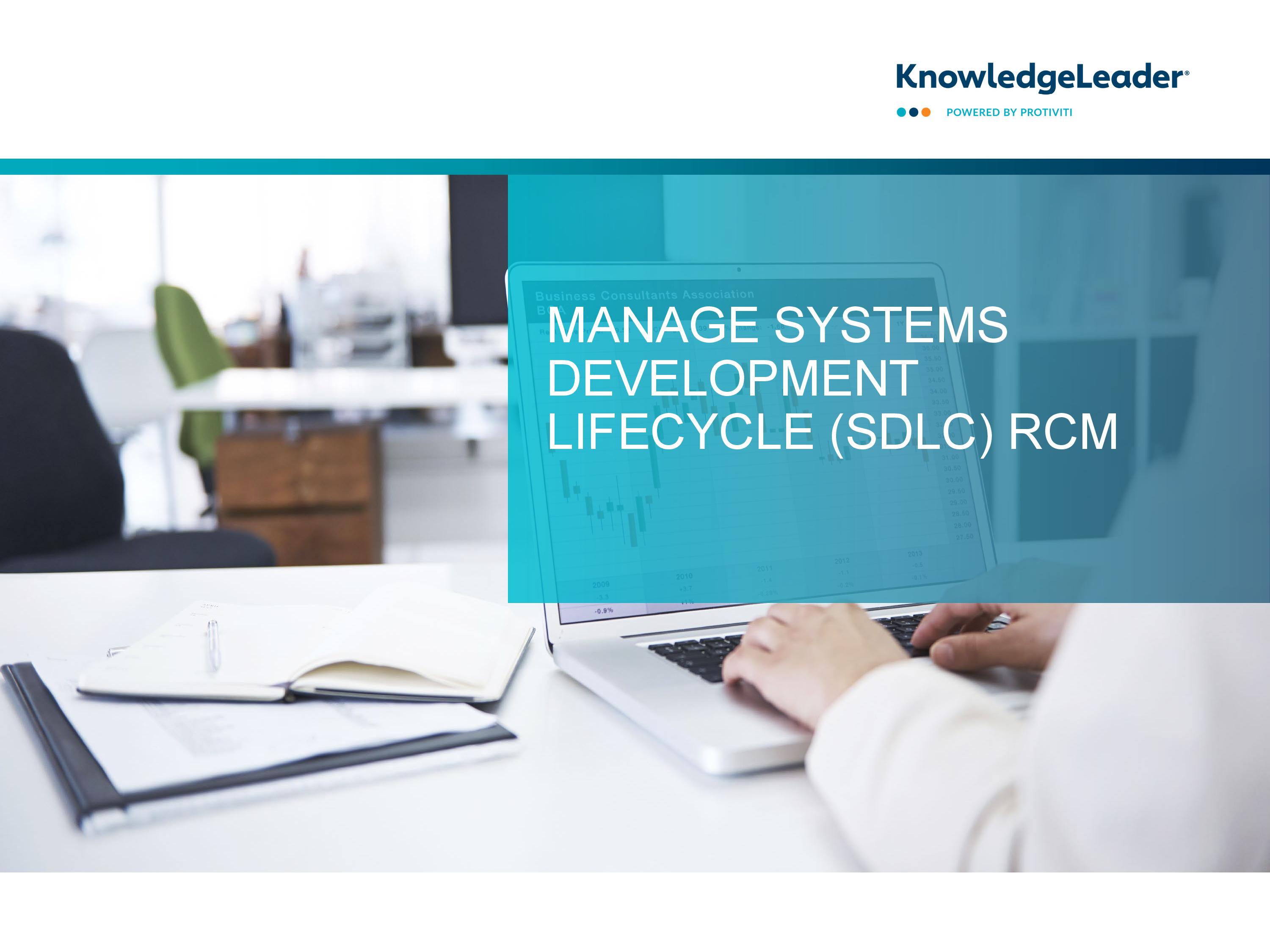Manage Systems Development Lifecycle (SDLC) RCM

A successful risk management strategy requires a strong internal control environment. The risk and control matrix (RCM) format emphasizes that strong and risk-oriented internal control environments are often optimized with automated/manual controls, depending on the situation.
An RCM provides an overview of different control objectives that organizations should take into consideration and the corresponding controls to safeguard the company against risks, which may arise if not checked timely. Once customized to an organization, this document can help the user in assessing each control. The control assessment can then also be summarized to develop an action plan to strengthen the internal control structure.
This document outlines risks and controls common to the 4.3.1 Manage Systems Development Lifecycle (SDLC) process in an RCM format.
Sample risks include:
- A project management framework is inappropriately used to manage a project.
- Management is unable to prevent project delays and setbacks, which leads to additional expenditures to complete the project.
- Security and quality requirements along with project requirements set by end users and the IT department are not met.
- The organization’s system development lifecycle documentation (SDLC) does not include security, availability and processing integrity requirements of the organization.
- The SDLC documentation created as per the SDLC procedure does not ensure that information systems are designed to include application controls that support complete, accurate, authorized and valid transaction processing.
This document can be used as a sample RCM and is not meant to be an exhaustive list of risks and controls. The KnowledgeLeader team will periodically update this RCM with new content. Organizations should select, update and modify the risks and controls included in this document to ensure that it reflects business operations.